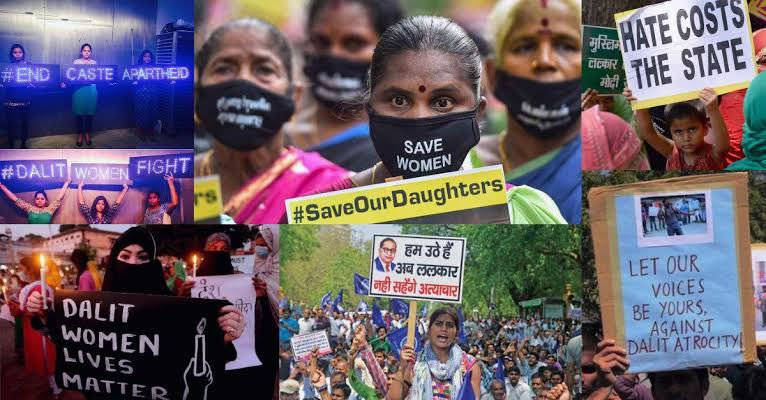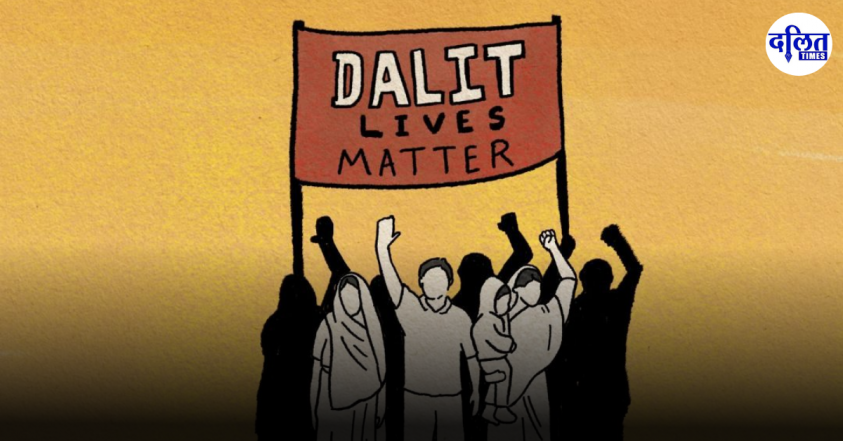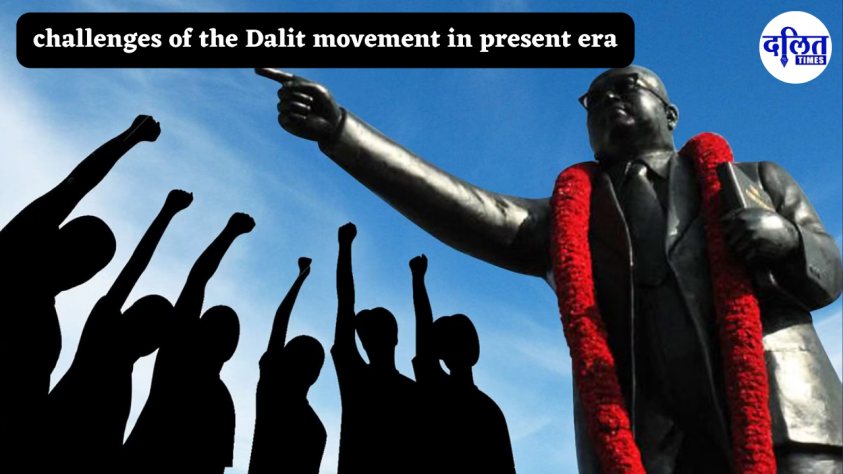Caste-based discrimination in the workplace is another area where prejudices persist. Despite laws designed to protect marginalized groups, discrimination in hiring, promotions, and pay scales remains rampant.
Caste discrimination remains a deeply entrenched issue in modern India, despite legal safeguards and constitutional guarantees. It continues to manifest in various forms across socio-economic, political, cultural, and educational institutions, in Caste ridden society like India and across the world. Anti-Caste movement warrior and charismatic leader Kanshi Ram once said that Indians carry their Caste identity with them wherever they go, which underlines how deeply Caste is rooted in the psyche of Indians. The biggest irony of this country is that there are some intellectuals from upper Castes and lower Castes who firmly believe that there is no Caste oppression and exclusion at all in the 21st century.
Although traditional manifestations of Caste, such as untouchability, have diminished due to ongoing Anti-Caste movements, the Casteist behaviour and practices still thrives in more subtle, more insidious ways. Many professionals in India, from doctors and engineers to IAS officers and media figures, often carry a Casteist mind-set, despite their high qualifications. It cannot be exaggeration to say that there is nothing in India, which is not classified into Caste system. Even judiciary is not away from this disease, which is responsible to maintain rule of law or a just society. These subtle forms of Caste-based discrimination are harder to detect, but their presence is palpable, particularly in sectors such as education, employment, and healthcare. Modern form of Caste psyche can be seen in hatred of Savarna peoples against constitutional rights or remedies of the Dalits. When they see capable and empowered Dalits they become angry and frustrated against policies like reservation. They feel that those who did not have the courage to stand up to them till yesterday are equal to us today because of reservation. Not only this, they also forget that such kind of their thinking is a disease which is a threat to humanity and the country. There is so much hatred towards the constitutional rights for the upliftment of Dalits that they even forget how many conspiracies were hatched in the history to empower them? And how Dalits, Adivasis and backward classes used to work hard and the upper Castes used to enjoy it? People of the upper Caste society are not at all ready to think with what intention and how their own ancestors put this disease in their minds?
Read Also: What BSP Means to the Dalits: Political, Social, and Cultural Empowerment
Their cunningness is such that they are always trying to explain how Dalits became untouchables due to their own reasons. But they never dare to tell what their role was and is in making Dalits untouchables and Dalits.
Educational Institutions: The Breeding Ground for Modern Caste Discrimination
Educational institutions in India are microcosms of society, and Caste-based discrimination is endemic within them. Students from marginalized Castes often face obstacles from the very start of their educational journey, encountering discriminatory practices in admissions, unequal treatment by teachers, and segregation in hostels and social events. This discrimination is compounded by limited access to scholarships, mentorship, and other resources, which curtails opportunities for academic growth and success. It is established fact that educational institutions are not a separate world. Therefore, they followed norms, values and practices, which practice in the society. As it is an established fact that educational institutions are also an integral part of the society. Due to which educational institutions are not able to escape the evils of the society or its ideals. In this way, the disease of Caste is swallowing not only the teachers of the Dalit society but also the students and employees. Students from lower Castes are often treated as inferior by teachers, who may not give them the same attention or encouragement as they do to students from upper Castes. Similarly, peers may engage in bullying or social exclusion, exacerbating the feeling of alienation. Although physical segregation has decreased, social segregation persists, with students from lower Castes often forming their own groups, isolated from others due to prejudices that persist from their upbringing. Marginalized Caste students frequently face barriers in accessing academic resources, including scholarships, training programs, and extracurricular opportunities, further limiting their ability to compete on an equal footing.
Caste Discrimination in the Workplace
Caste-based discrimination in the workplace is another area where prejudices persist. Despite laws designed to protect marginalized groups, discrimination in hiring, promotions, and pay scales remains rampant. Individuals from lower Castes often find themselves side-lined for opportunities and promotions, facing an implicit ceiling on their professional growth due to their Caste identity. Thus, employees from lower Castes may receive lower wages than their upper-Caste counterparts, even when performing the same tasks. Talented individuals from marginalized Castes may be passed over for promotions in favour of less-qualified upper-Caste candidates. Marginalized Caste individuals are often subjected to harassment or bullying, with little recourse for justice due to their lower standing in the organizational hierarchy.

Housing and Rental Discrimination
The housing sector is another domain where Caste discrimination is starkly visible. Individuals from lower Castes often face difficulties in finding rental properties or housing due to landlords’ biases. Even when they do find housing, they may be subjected to higher rents or deposits, or find themselves segregated into less desirable neighbourhoods. For instance, Landlords may refuse to rent to individuals from lower Castes, especially in urban areas where such practices can be more easily concealed. Even within housing communities, marginalized Caste individuals may be clustered into specific sections, away from upper-Caste residents. Lower Caste residents may receive inferior maintenance services or face discriminatory treatment from housing authorities.
Caste Discrimination in Healthcare
Healthcare is another sector where Caste-based discrimination is evident, often with deadly consequences. Marginalized Caste individuals face neglect or apathy from healthcare providers, and in some cases, they are outright denied medical care. This results in lower health outcomes for these communities and perpetuates the cycle of poverty and disadvantage. For instance, doctors and nurses may treat patients from lower Castes with less care or respect, leading to substandard medical attention. Healthcare professionals may fail to take the complaints of marginalized Caste patients seriously, resulting in delayed diagnoses or inadequate treatment.
The Role of Social Media in Caste Discrimination
In the digital age, social media platforms have become both a battleground and a breeding ground for Caste-based discrimination. Marginalized individuals often face cyberbullying, hate speech, and online harassment, and Casteist content, memes, and jokes are commonly shared on these platforms. Social media also becomes a space where subtle biases manifest, excluding individuals from conversations or opportunities.
For example, Dalit activists and individuals from lower Castes frequently face targeted harassment online, with trolls using Caste-based slurs and threats to intimidate them. Marginalized Caste individuals may have limited access to online resources and opportunities due to both implicit bias and lack of digital literacy.
Political and Institutional Casteism
Caste continues to play a significant role in India’s political and governance structures. Marginalized Castes remain underrepresented in elected offices, decision-making bodies, and policy-making processes. Even government schemes designed to benefit lower Castes often face bureaucratic hurdles or are unevenly implemented due to Caste biases within the system. Marginalized Caste individuals are often excluded from key leadership positions in politics and governance. Schemes intended to uplift lower Castes, such as reservation policies, are often undermined by political and institutional resistance.
Marriage, Social Relationships, and Cultural Exclusion
Caste continues to dictate social relationships in India, especially in the realm of marriage. Inter-Caste marriages, though legal, are still met with fierce resistance, often resulting in violence or social ostracism. Caste hierarchies also govern participation in cultural and religious spaces, with marginalized Castes facing exclusion from events, rituals, and traditions. Honour killings and threats are common in cases where individuals defy Caste norms to marry outside their Caste. Individuals from lower Castes may be barred from participating in certain religious rituals or traditions, perpetuating their social marginalization.
Conclusion
The modern forms of Caste discrimination in India are both subtle and pervasive. They permeate every facet of society, from education and employment to healthcare and housing. While Caste-based atrocities like untouchability may no longer be as visible, the Caste system has evolved to fit into the modern, more complex societal framework. It now manifests in institutional policies, workplace discrimination, and even digital spaces, demonstrating the deeply ingrained nature of Caste in Indian society.
Read Also: Haryana has been handed over to dalals’ anddamads…’ : PM Modi targets Congress in Sonipat
Efforts to combat Caste discrimination must therefore go beyond the legal realm and address the socio-cultural underpinnings that allow this form of injustice to persist. Only then can India hope to move toward a truly egalitarian society. Manifestation of modern form of Caste-based subjugation and exclusion can be seen in brutality of atrocities and mob lynching of Dalit. Moreover, mob lynching and atrocities against Dalits are justified in the name of defence of religious beliefs and values. Hatred against constitutional rights and provisions is nothing but a modern form of Caste based discrimination.



